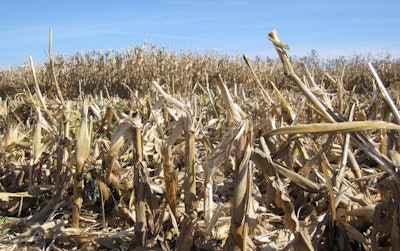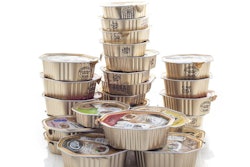
All of the trends and factors driving the ongoing growth of pet food – humanization, premiumization, new product development, to name a few – have at least one common element: ingredients. For example, novel ingredients often lead to concepts for new pet food products, and the continuing premiumization of pet food has higher-quality ingredients as its foundation.
One of the hallmarks of humanization is pet parents’ desire to feed their furry family members the same, or very similar, to how they feed the human ones. That means seeking – and avoiding – certain types of ingredients and, increasingly, wanting to know where those ingredients come from, how they are processed and so on. In fact, the very close (and ever tightening) connection between human food and pet food plays a significant role in several recent news announcements and articles about pet food ingredients.
Buzzwords likely to outlast their buzz
Clarification. Authenticity. Transparency. These are buzzwords that we’ve been hearing about consumer demands regarding human and pet food for a while now. Sometimes buzzwords are just that – buzz – and sometimes they portend a lasting phenomenon. Barring some unforeseen market development, I don’t think this situation is going away.
“These are now the rules of the game,” said LuAnn Williams, director of innovation for Innova Market Insights, in regard to the concept of clean and clear food labels. “It’s no longer a trend.” Williams presented a webinar in November 2016 on the top 10 human food trends for 2017, naming “clean supreme” as the top one, even though she said it’s no longer a trend. (Hmmm.)
“Consumers will continue to demand transparency, which will lead to the increased use of certified ingredients,” said Jennifer Adolphe, PhD, senior nutritionist for Petcurean, in an article by Lindsay Beaton on pet food experts’ trend projections for 2017. “Certifications are a clear way to inform consumers about the way in which a food or ingredient is produced.”
As for the types of ingredients consumers continue to seek, superfoods are still very popular, according to Dolinda Meeker, senior account director for Product of the Year USA. Maria Lange, business group director for GfK, said limited ingredient diets (LID) will continue to grow in sales and popularity because they provide a level of transparency in terms of ingredients in those pet foods.
Demonizing carrageenan and other ingredients
From corn to soy to wheat to meat by-products, many formerly common pet food ingredients have not only fallen out of favor with consumers over the years but also have become labeled as bad, unhealthy, even dangerous or unsafe. “Many of these are given negative connotation from internet ‘experts’ that draw large crowds to their lack of nutrition or food understanding,” wrote George Collings, PhD, owner of Collings Nutrition Solutions, in the December issue of Pets International magazine. “These experts go further by attacking ingredients clearly found in human food plants (potato, tapioca, peas, etc.) because these ingredients might not meet their inexperienced nutritional bent and website perception. With the lack of consumer education that exists in the pet food market, consumers are drawn to almost anything said on these unchecked and (un)edited websites.”
The latest ingredient getting this treatment is carrageenan, commonly used in wet pet foods as a binding and forming agent. According to NPR’s "All Things Considered," it’s falling out of favor for use in human foods due to disputed reports that it has been shown to cause intestinal inflammation in lab animals and that it can cause health problems, including intestinal upset and migraines, in people. Anecdotally, I’m hearing that similar concerns are being applied to its use in pet food; in fact, some wet pet foods are even bearing a “no carrageenan” claim on their labels.
This is despite no sound scientific evidence that carrageenan is harmful for pets, humans or any creature, but the situation definitely bears watching.
Bugs and fish and such
In his article, Collings also commented that the current regulatory environment, especially in the US, makes it difficult to gain approval to use new ingredients in pet food in anything even approaching a timely manner. That includes novel proteins, which can replace some of those demonized ingredients as well as address health issues such as allergies and protein intolerances in pets.
Case in point: insect proteins, which are drawing more and more buzz (sorry, pun intended) as not only a source of novel protein but also as a sustainable source that could help alleviate the pet food industry’s reliance on the same animal proteins in heavy demand for human food. At least in the EU, there is some movement on this front: FeedNavigator.com and other sites are reporting that insect proteins just received the green light by the EU Commission to be used in fish feed. In this case, people involved said the decision came faster than expected, though approval for use of insects in other, non-ruminant species (namely pigs and poultry) is not expected before 2020.
What about pets? In the December 2016 issue of Pets International, Thomas Meyer, secretary general of the European Pet Food Industry Federation (FEDIAF), painted a rosy picture, writing that “things are on the move to further regulate the use of insects as feed or food in the EU,” but it’s not clear whether any of the measures being considered (presumably including the one just passed for aquaculture) and safety studies under way apply to or encompass pet food. As in the US, it could still be quite the waiting game.
Meanwhile, pet food manufacturers using marine proteins in their products would be wise to pay attention to the species of fish and their biology, as some species, typically carnivorous ones, are more prone to accumulate more mercury from the ocean than other species do. That’s according to a study recently published in the Animal Feed Science and Technology journal.
In other news, GA Pet Food Partners, one of the largest private label manufacturers in Europe, recently announced that it is extracting and pressing its own oils on site from the meat and fish proteins being used in its clients’ pet food products. “This allows us to coat kibbles with amazingly high-quality fats and oils seen normally in human foods and gives us the full traceability back to source, from farm, fishery or boat,” the company said.

















